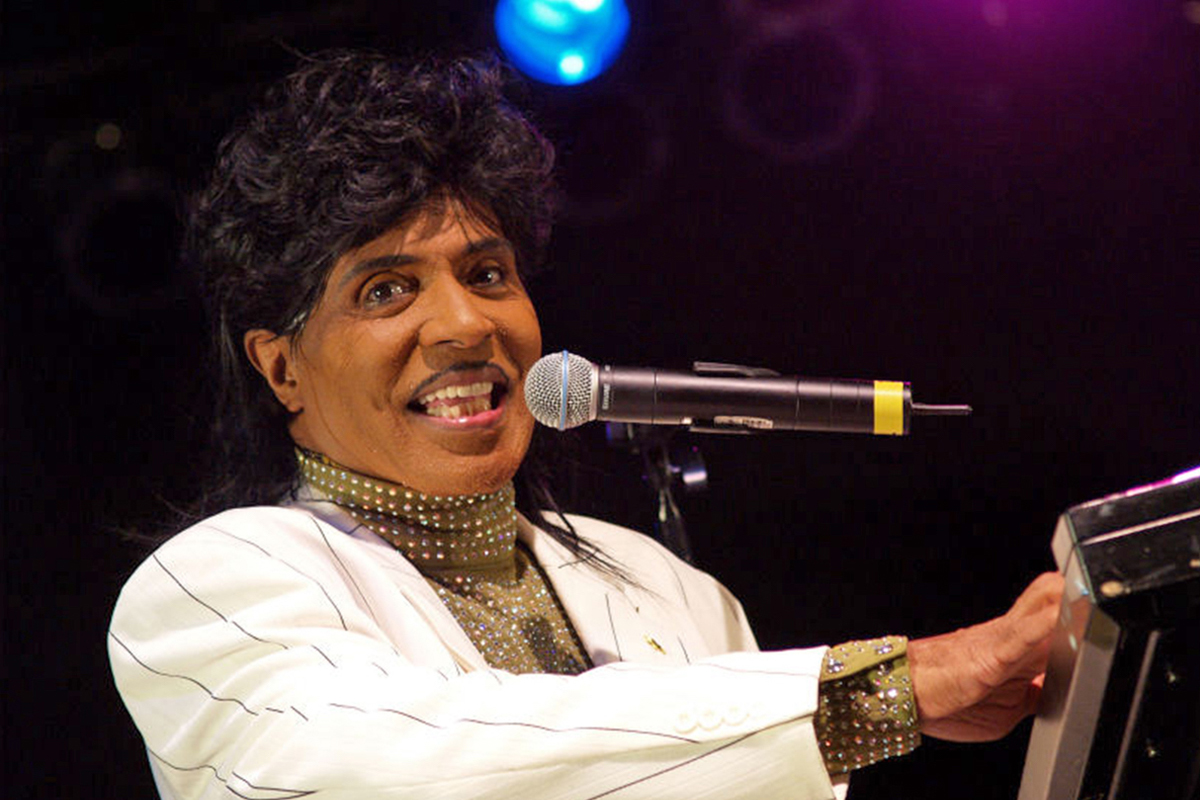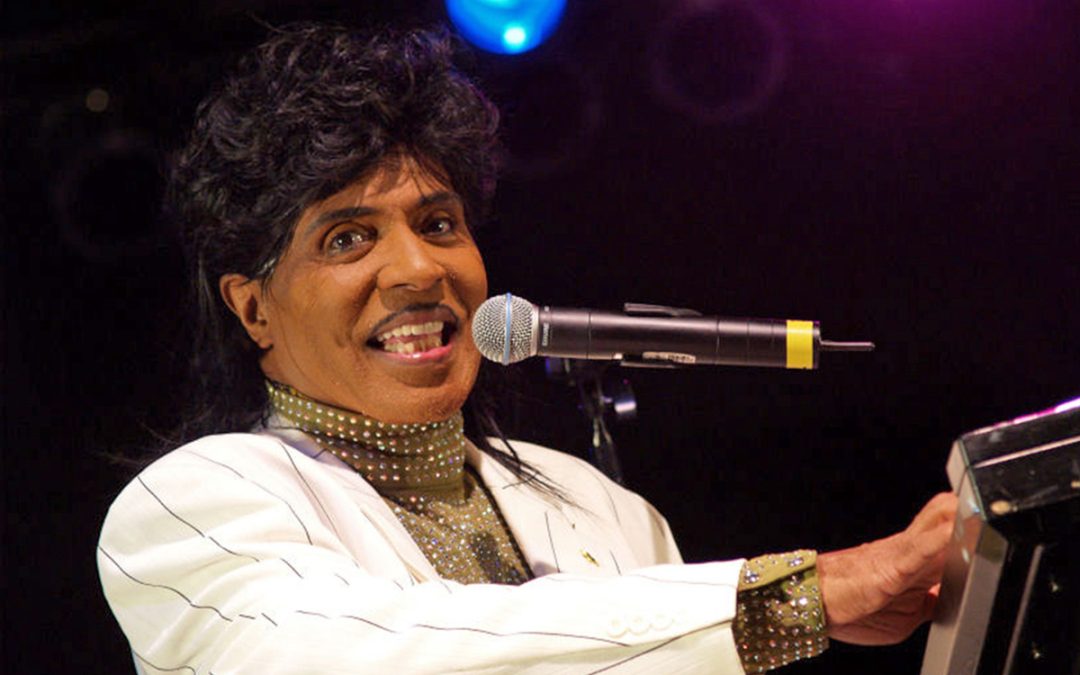
Little Richard in 2007.
It’s a phenomenal time to be a queer musician. Though we still have a long way to go in terms of dismantling the systems which routinely subject LGBT people to physical and emotional harm, one would be hard pressed to deny that queer musicians currently enjoy a level of freedom and critical validation that many of their forerunners did not (one must wonder what Wham!’s trajectory would have looked like if they’d been able to openly court screaming hordes of swishy queers shouting “yaaaaaaas,” rather than being forced to try to sell George Michael as a straight heartthrob. Ah, well.) In fact, queer musicians seem to be enjoying a bit of a cultural moment. Recent releases by Mykki Blanco, Kaytranada and G.L.O.S.S. (RIP ☹) have been met with critical praise. Anohni was nominated for an Oscar. Hell, Beyonce sampled Big Freeda for chrissakes.
But while all of the attention being paid to contemporary queer artists is wonderful and important and completely deserved, it’s important to remember the artists who fought tooth and acrylic nail to carve out spaces for themselves in a largely white, straight musical landscape. People like Grace Jones, Boy George, Freddy Mercury, Divine, David Bowie, Darby Crash. You know, the legends. And perhaps more importantly, we should remember those queer artists and culture creators whose contributions are often overlooked, or retro-fitted to erase their queerness.
To that end, I’d like to introduce a new series I’d like to call They’re Here, They’re Queer, which will periodically focus on the unsung (or at least under-sung) heroes of queer music history. Hopefully, I can give these artists some small portion of the immense credit they’re due. This first installment seemed obvious. Who else to discuss but a man whose contributions would eventually help define the shape of modern American popular music, whose influence can palpably be felt in every rock musician since Elvis? Who else but Little Richard?
Rock and roll is id music, an intoxicating crackle of noise and kinetic energy that, if executed correctly, slams shut every mental door that opens on anywhere other than the present moment. Rock and roll, more than any other kind of music, exists in the liminal space between rapture and madness. If you don’t believe me, watch early performances by The Beatles where teenage girls scream and openly weep and pass out. Watch Jimi Hendrix lighting his guitar on fire at the Monterey Pop Festival. Or, for the purest, most powerful strain of rock and roll, just watch Little Richard.
If Little Richard did not invent rock and roll in its entirety, he certainly created the mold from which all modern rock music was to spring. Richard’s music synthesized R&B, blues, gospel and boogie-woogie, resulting in his singular brand of feral proto-rock. Swathing himself in capes and diamonds, with a razor-thin mustache and a pompadour approaching dangerous heights, Little Richard also laid the groundwork for the emergence of artists like David Bowie, Elton John and Prince, whose images and stage antics are as much a part of their legacies as the music they made. And of course there was that voice. Capable of explosive falsetto and imbued with a howling, primordial sexuality, it was Little Richard’s voice more than anything else that leant his songs their unearthly virility. Keith Richards once remarked that upon hearing “Tutti Frutti” for the first time the world changed from black-and-white to Technicolor. I’m inclined to agree.
[sam_pro id=”1_25″ codes=”true”]
[wc_spacing size=”20px”]
The boy who would become Little Richard was born Richard Penniman in Macon, Georgia in 1932. The son of highly religious parents and the third of twelve children, Richard spent a great deal of his childhood in the community fold of neighborhood churches. Richard was a flamboyant child, attracted to makeup and later, beautiful men. At the age of fifteen, Richards father, mortified by his son’s behavior, kicked him out of the family home.
His initial forays into music were all small-time gospel groups (including one made up of his family members), but his first break came in the form of rock/gospel pioneer Sister Rosetta Tharpe, who, after hearing Richard singing in the parking lot outside a gig, invited him to join her on stage as part of the performance.
After signing on with RCA Victor and releasing a series of unremarkable R&B singles that failed to gain traction, Richard headed for the greener pastures of Specialty Records. There he released his first smash hit “Tutti Frutti” (adapted from ribald ode to anal sex Richard had been touring with for years. Original lyrics: “tooty fruity, good booty!”) in 1955. He went on to release a string of hit singles: “Good Golly, Miss Molly,” “Long Tall Sally,” “Slippin and Slidin,” “Lucille,” “The Girl Can’t Help It,” among others.
The rest of Little Richard’s life is too long and too interesting to be done justice in my meager word count. Seriously. He may or may not have had a threesome with Buddy Holly and he once interpreted the launch of Sputnik 1 as a sign from God that he should attended bible school. The man lived a life.
Besides, what matters for the purpose of this piece is the way that Richard’s music affected what came after.
Certainly, Little Richard has received his due as a forefather of modern rock and roll. He was one of the first inductees to the Rock and Roll Hall of Fame and has been cited as a major influence by everyone from The Beatles to Patti Smith to Andre 3000. His music has been covered by James Brown, Freddie Mercury and bob Dylan. He has a Grammy Lifetime Achievement Award, accolades from the National Museum of African American Music. “Tutti Frutti” is included in The Library of Congress’ National Recording Registry. In some senses, attempting to give the man his due seems redundant. He was and will remain a big deal.
But in many other ways, Little Richard’s contributions have been glossed over in favor of the narrative of rock and roll as a primarily white invention. Also, unlike his contemporaries like Elvis or Buddy Holly, Little Richard has often been reduced, as so many effeminate black men have, to a walking meme. Certainly his exaggerated appearance and his delightfully absurd mannerisms have added to this effect, but it’s hard to imagine anybody being quite so flippant about Elvis in his last days, or the fact that Mick Jagger looks like a sock puppet at this point.
And even if his musical achievements have been sufficiently covered, his status as a queer pioneer has not. Imagine, if you will, that tomorrow a young, flamboyant black man from the deep South explodes on to the charts with a song that sounds like nothing you’ve ever heard. Imagine that he is unapologetically queer–openly speaking about his sexual desires for men and women, wearing makeup and elaborate wigs, covering himself in lace and lame. Even if he existed now, Little Richard would seem like a revelation. Now place him against the backdrop of segregation and the Ku Kux Klan and familial abuse and you begin to understand the extraordinary life and legacy of Little Richard. It’s a life that thrums with the vitality and absurdity of his most iconic line: a-whop-bom-a-loo-mop-a-whop-bam-boom.
[wc_spacing size=”40px”]
[wc_divider style=”solid” line=”single” margin_top=”” margin_bottom=””]


You must be logged in to post a comment.